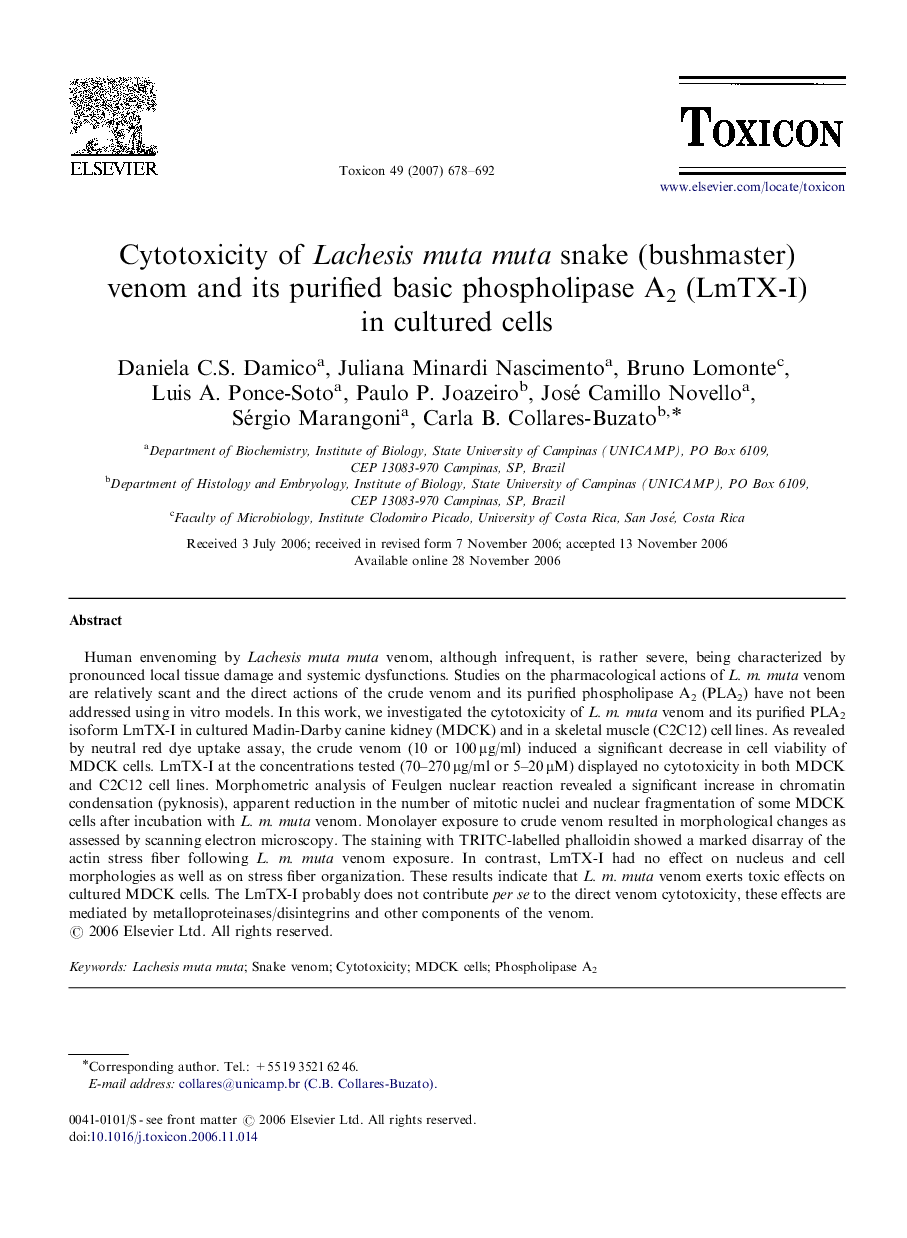| Article ID | Journal | Published Year | Pages | File Type |
|---|---|---|---|---|
| 2066122 | Toxicon | 2007 | 15 Pages |
Human envenoming by Lachesis muta muta venom, although infrequent, is rather severe, being characterized by pronounced local tissue damage and systemic dysfunctions. Studies on the pharmacological actions of L. m. muta venom are relatively scant and the direct actions of the crude venom and its purified phospholipase A2 (PLA2) have not been addressed using in vitro models. In this work, we investigated the cytotoxicity of L. m. muta venom and its purified PLA2 isoform LmTX-I in cultured Madin-Darby canine kidney (MDCK) and in a skeletal muscle (C2C12) cell lines. As revealed by neutral red dye uptake assay, the crude venom (10 or 100 μg/ml) induced a significant decrease in cell viability of MDCK cells. LmTX-I at the concentrations tested (70–270 μg/ml or 5–20 μM) displayed no cytotoxicity in both MDCK and C2C12 cell lines. Morphometric analysis of Feulgen nuclear reaction revealed a significant increase in chromatin condensation (pyknosis), apparent reduction in the number of mitotic nuclei and nuclear fragmentation of some MDCK cells after incubation with L. m. muta venom. Monolayer exposure to crude venom resulted in morphological changes as assessed by scanning electron microscopy. The staining with TRITC-labelled phalloidin showed a marked disarray of the actin stress fiber following L. m. muta venom exposure. In contrast, LmTX-I had no effect on nucleus and cell morphologies as well as on stress fiber organization. These results indicate that L. m. muta venom exerts toxic effects on cultured MDCK cells. The LmTX-I probably does not contribute per se to the direct venom cytotoxicity, these effects are mediated by metalloproteinases/disintegrins and other components of the venom.
